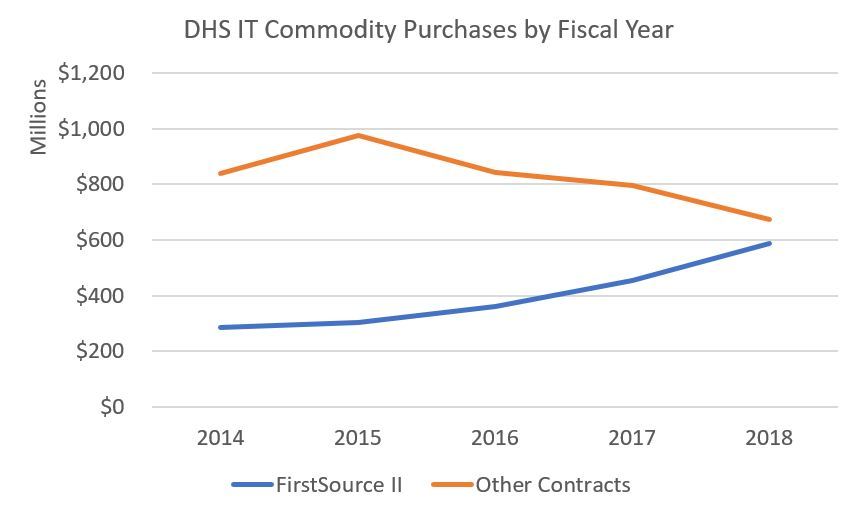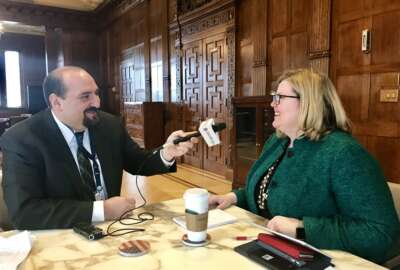Interior, DHS, GSA add drama, intrigue, tragedy and comedy to the federal procurement soap opera
The Interior Department awards a $94 million contract to move its email to Microsoft O365, while DHS will release its solicitation for FirstSource III in January.
Best listening experience is on Chrome, Firefox or Safari. Subscribe to Federal Drive’s daily audio interviews on Apple Podcasts or PodcastOne.
The government’s experiment with Google apps is over.
The Homeland Security Department bucks a recent trend for large multiple award contracts.
And the General Services Administration rethinks and expands one of its major governmentwide acquisition vehicles for small businesses.
Welcome to another edition of As the Federal Procurement World Turns.
Let’s start with drama of a $94 million contract award by the Interior Department.
Or more precisely, the lack of drama.
Interior awarded Planet Technologies and its partners Definitive Logic and Minburn Technology Group a 10-year contract to move the agency’s 84,500 users from Google Apps for Government to Microsoft Office 365 email and collaboration.
The contract, which didn’t face a bid protest, essentially means one of the government’s largest user of the search giant’s tools decided to go back to Microsoft.
The story was much different in 2012 when Interior was one of the first agencies out of the gate to consolidate its email in the cloud. The battle for the contract between Microsoft and Google implementers was dramatic and intense. In the end, Onix, which provided Google, won out after several protests and reconsiderations.
Interestingly enough, the cost seven years ago to move Interior to cloud email was $34.8 million over five years—it was extended by two years to allow for the recompete—for an average of less than $7 million a year. The new contract averages about $9.4 million a year. To be clear, the capabilities and technology are much better than in 2012, which accounts for some of the increased cost.
“The cloud based solution will support DOI employees by improving work collaboration methods, documentation flows, communication capabilities, streamlined email usage and management and overall increased business performance of DOI’s mission, cost and support objectives,” the statement of work states. “DOI goals include developing an integrated partnership to build a project that transitions accounts, data, technical controls, authentication or access capabilities and applications that make up the current cloud email and collaboration system into a modernized, secure, service enriched, email and collaboration system.”
The fact the unsuccessful bidders didn’t file a bid protest is both a testament to Interior’s acquisition effort as well as the fact that email in the cloud has gotten passé.
The Office of Management and Budget reported in June that agencies have 75% of their email in the cloud, including 14 departments that have achieved at least the 95% mark.
Other big users of Google Apps for Government are the General Services Administration and the National Oceanic and Atmospheric Administration, but not the Commerce Department at large.
DHS offers some acquisition intrigue
Now for the intrigue part of this federal procurement soap opera.
The Homeland Security Department’s alert to industry about its acquisition strategy for the FirstSource III vehicle surprised some observers.
DHS told contractors to expect a solicitation in January 2020 with multiple industry engagements scheduled between now and then.
“To ensure that there is no gap in the department’s ability to have continued, streamlined access to IT goods and services, and to uphold our long-standing commitment to small businesses, we have decided to extend the FirstSource II contract vehicle,” Soraya Correa, DHS’s chief procurement officer, stated in the notice on FedBizOpps.gov on Aug. 19. “The ordering period for all FirstSource II contracts will be extended to Sept. 15, 2020. Performance under any orders shall not extend beyond Sept. 14, 2021.”
The intrigue in this drama comes from DHS’s decision. If you remember, Correa boldly decided not to recompete its highly successful EAGLE IT services multiple award contract vehicle, and instead move it to the GSA schedules.
Brian Friel, a principal with BDSquared, a market research and data analytics firm, said DHS’s decision was a bit surprising given the agency could achieve the same goals using existing contracts like NASA SEWP or the National Institute of Health’s CIO-CS.
“FirstSource is a reseller contract. The decision represents to me that there is a strong sense in the department that their needs for products in IT are unique and they need to continue their own IT commodities vehicle to make sure the kinds of products that their buyers want are available,” Friel said. “You can argue that point. But I think folks at SEWP or NIH would say anything you buy on FirstSource you can buy on SEWP or CIO-CS. DHS also could achieve their small business goals by switching to one of these existing contracts since most of the vendors on these contracts are small businesses.”
Without a doubt, FirstSource has been a popular and successful contract for DHS. Friel said his analysis found that DHS used FirstSource for 47% of its IT commodity purchases last year, up 21% over the last four years.

The trend over the last two years, especially with the focus on category management, has been for agencies to move away from standalone multiple-award contracts
Friel said there are several examples of this change of thinking, from the Special Operations Command and the State Department creating blanket purchase agreements on top of the IT schedule to replace existing contracts, to the Agriculture Department shifting a lot of its IT services and commodity work to CIO-SP3 from NIH and GSA’s 8(a) STARS contract.
“The view is that moving to a GSA schedule with BPA is better than creating an indefinite delivery, indefinite quantity contract off the schedules where you have to establish pricing and terms and conditions that are totally unique. By creating a BPA, you are taking advantage of existing pricing and terms and conditions so you are achieving some efficiencies,” he said.
Comedy or tragedy around Alliant small business
And now to the tragedy or comedy, because this part of the soap opera is as sad as much as it hurts.
GSA announced it would reopen bids for its Alliant 2 small business contract, but first it wanted to collect comments on its proposed changes.
“The GSA A2SB procuring contracting officer recommends that offerors DO NOT significantly invest their company resources, specifically ‘bid and proposal dollars,’ into developing proposal revisions in response to this draft amendment because (1) that is not the purpose of this draft, and (2) changes to this draft amendment may occur before the official amendment 9 is released,” GSA states in its notice on FedBizOpps.gov.
Comments are due by Sept. 3.
Friel said GSA’s decision to reopen the contract means it will be another 6-9 months at least until Alliant 2 Small Business is up and running. The first version of this IT services contract expired in February after agencies spent more than $8.7 billion on 695 task orders since 2009. And that’s the tragedy of Alliant 2 SB—a popular and successful contract remains tangled in protests and revisions.
Or is it comedy that GSA refuses to evolve with these “winner-take-all” type of contracts and just let the real competition happen at the task order level.
Friel said in the first round of bids for Alliant 2 SB, GSA received 493 responses and awarded to 81 winners in February 2018.
After a successful protest before the Court of Federal Claims, GSA rescinded all 81 awards in April and has been planning its next steps since then.
“All bidders have to resubmit those two sections and have opportunity to resubmit their entire proposals,” Friel said. “GSA says it will award 120 contracts this time, but that still leaves hundreds of companies that will miss the cut of the self-scoring system.”
Friel said since there are only five incumbents from Alliant SB out of the 70 who won, this is a big second chance for all those contractors who failed to win the first time.
“The problem the first time was GSA didn’t use same evaluation process for everyone so as long as they go back to contracting 101 and apply standard evaluation criteria, they should get the contract up and running this time. But there is no question that it will take a year,” he said. “The good news is the scorecard concept has succeeded on every protest that has been filed against it.”
What’s also both tragic and ironic is OMB designated Alliant 2 SB a “best-in-class” contract in September 2017, and here we are two years later and the vehicle doesn’t even exist yet as it’s mired in protests and mistakes. Does that make it still “best-in-class?”
D-Day for GSA’s schedules
And finally, the preview for the next episode of As the Federal Procurement World Turns.
GSA will release its new consolidated schedule by Oct. 1, according to a blog post by Centre Consulting’s Barbara Kinosky.
This also means contractors can start accepting the mass modification that includes the new terms and conditions in mid-January 2020.
“We understand modifications to add the new consolidated special item numbers will not be accepted after Sept. 30 until sometime in mid-January 2020 after contractors have accepted the mass modification incorporating the new consolidated Schedule terms and conditions,” Kinosky writes. “New offers for new schedules that have been submitted prior to Sept. 30 but not finalized will still be reviewed and awarded. This includes the streamlined/successful legacy offers.”
GSA announced its plans last November to move vendors to one consolidated schedule from the current 24 by the end of fiscal 2020.
This and the effort to finally modernize of the FedBizOpps.gov website should make for an interesting fall and winter.
Copyright © 2025 Federal News Network. All rights reserved. This website is not intended for users located within the European Economic Area.
Jason Miller is executive editor of Federal News Network and directs news coverage on the people, policy and programs of the federal government.
Follow @jmillerWFED
Related Stories






